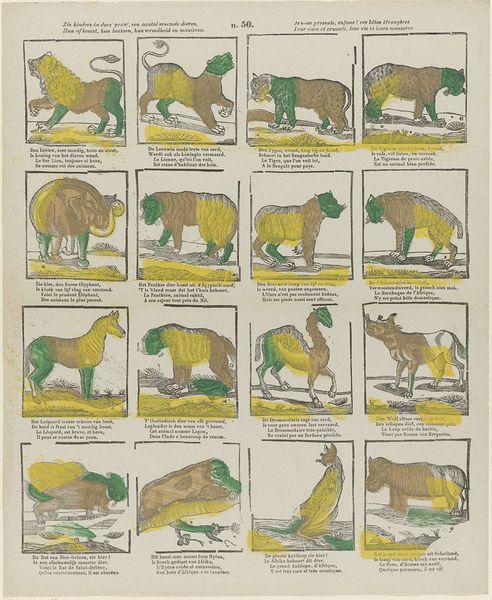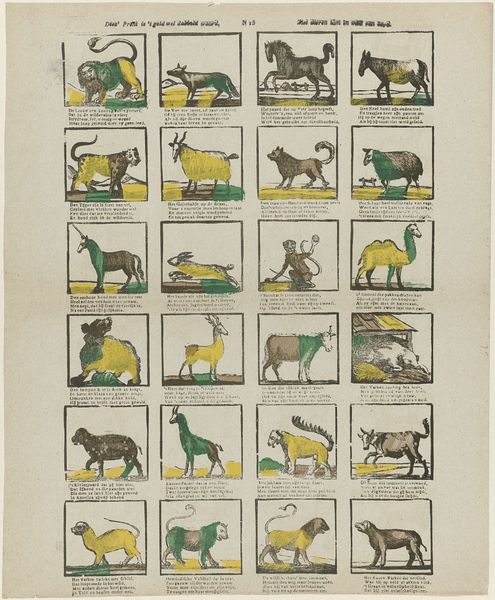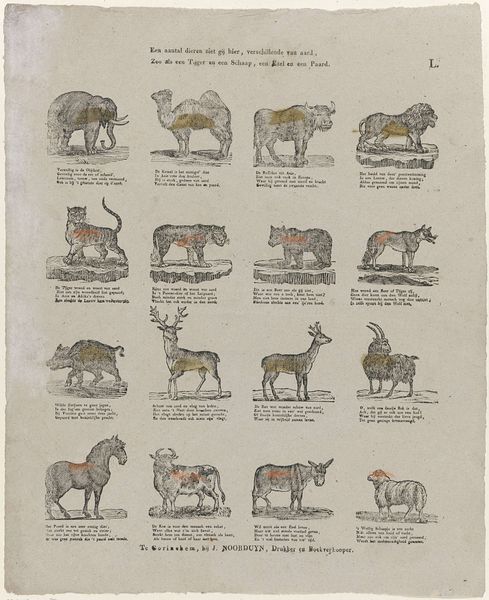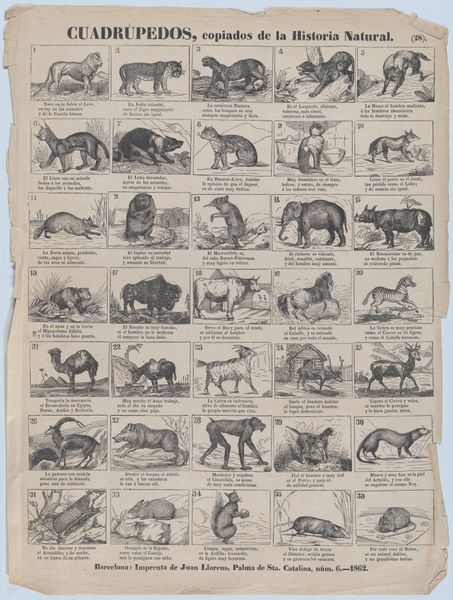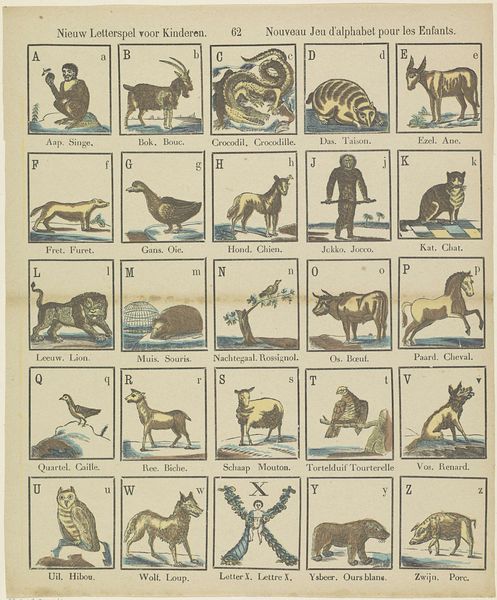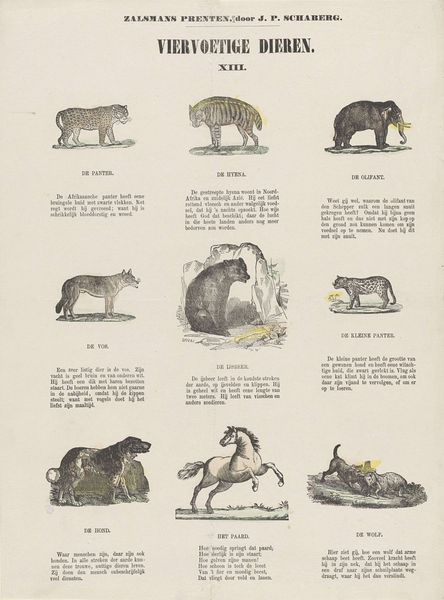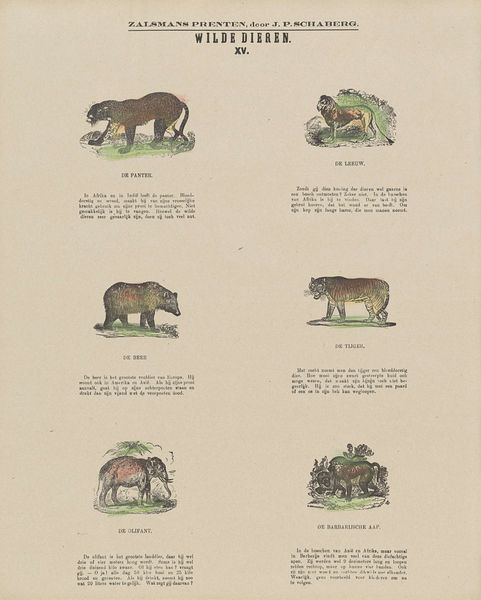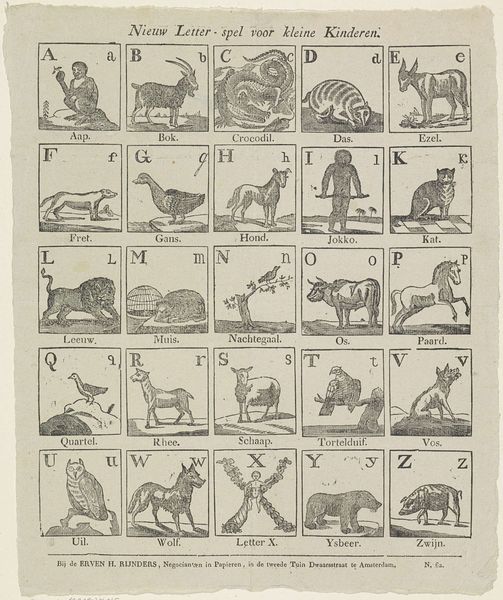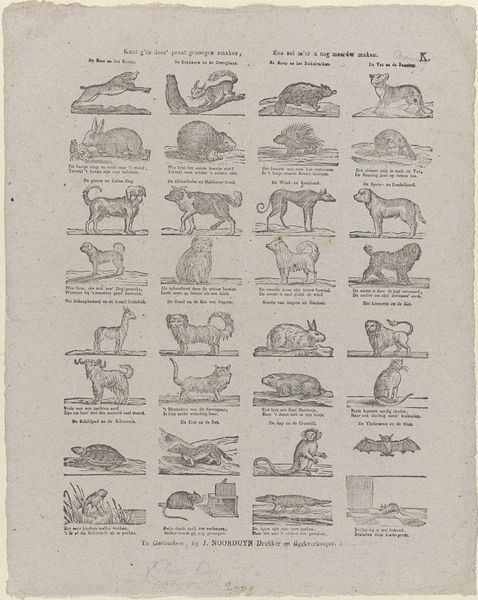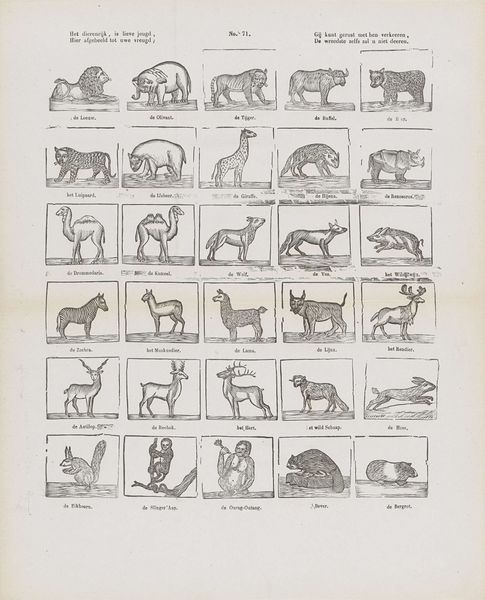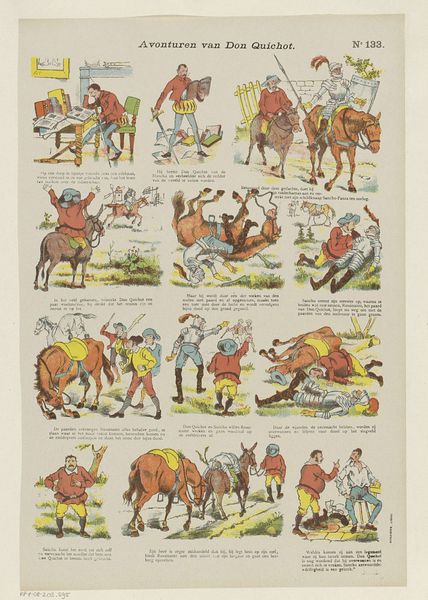
lithograph, print
#
comic strip
#
lithograph
# print
#
folk-art
#
genre-painting
#
academic-art
Dimensions: height 425 mm, width 295 mm
Copyright: Rijks Museum: Open Domain
Editor: This lithograph print, titled "De kleine diergaerde voor kinderen," or "The Little Zoo for Children," created sometime between 1866 and 1902 by Franciscus Antonius Beersmans, features a grid of various animals. The style feels both playful and educational. What do you make of it? Curator: Considering the social history, educational prints like this one served a very specific purpose in 19th-century society. The focus was on didactic materials, carefully crafted to instill particular values and understandings of the world, often tied to colonial exploration and a fascination with the animal kingdom. Editor: So, this wasn't just for learning about animals; it was about shaping a worldview? Curator: Precisely. The categorization itself speaks to an emerging scientific perspective, classifying the world into digestible, manageable components for young minds. Where would this likely be displayed, and by whom? Editor: Probably in a classroom, or maybe even a more affluent home. So, not exactly folk art. Curator: Yes, and observe the style. Academic art sought to impose order and structure. Even in a child's learning material, you see the reflection of social hierarchies. Does seeing this new context shape your view? Editor: Absolutely. What initially seemed whimsical now has a layer of societal intent that I didn't see before. I assumed this was a straightforward children’s book, but there’s more complexity to the social context, and more influence through displaying. Curator: It highlights the important role art plays in shaping public understanding, and I hope you now recognize the social power art contains, even what appears to be minor visual entertainment.
Comments
No comments
Be the first to comment and join the conversation on the ultimate creative platform.
